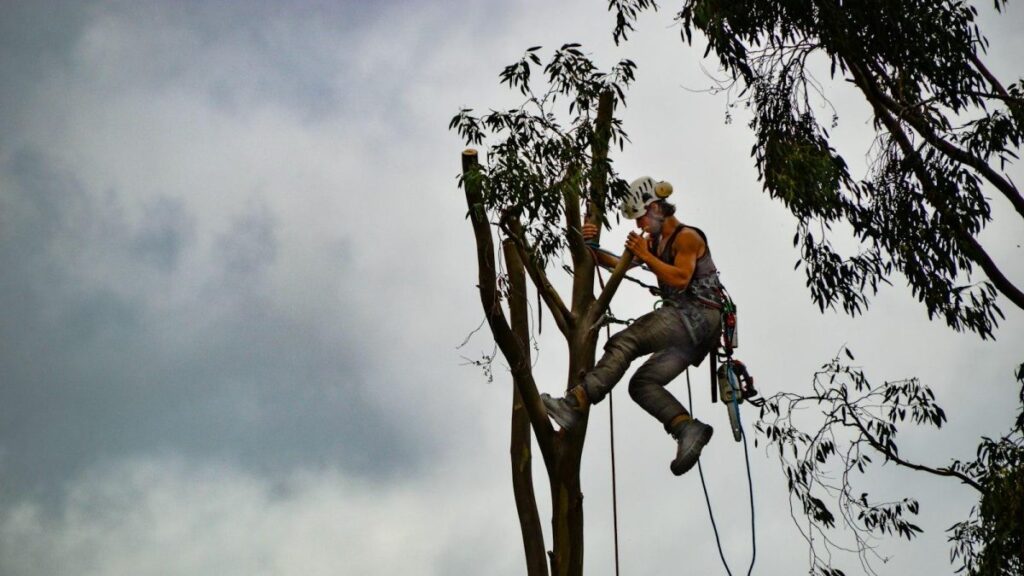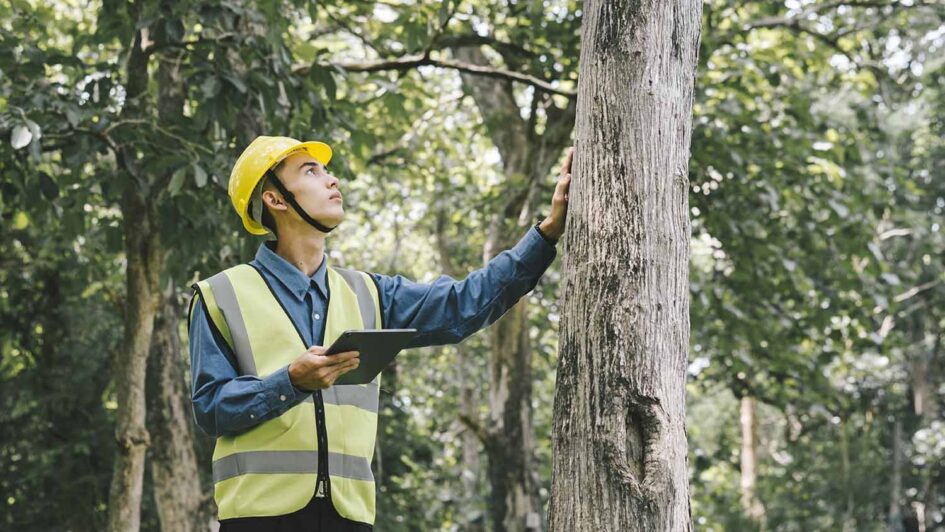When it comes to the care and maintenance of your property in Sydney, one aspect that should not be overlooked is the health and safety of your trees. Trees not only enhance the aesthetic appeal of your property but also provide numerous benefits, such as shade and improved air quality.
However, it is essential to ensure that your trees are in good condition and pose no risks to your property or the people who live or work there. This is where the arborist reports Sydney becomes crucial.
Understanding the Role of an Arborist
An arborist is a trained professional who specializes in tree care and maintenance. They possess expert knowledge about all aspects of trees, including their growth patterns, diseases, and potential risks. Arborists are equipped to assess the health and structural integrity of trees and provide recommendations for proper care and maintenance. They play a vital role in ensuring the safety and well-being of trees, as well as the surrounding environment. Learn more why you need a tree arborist in Sydney.

What is an Arborist?
An arborist, also known as a tree surgeon, is an individual who has undergone extensive training and certification in the field of arboriculture. They have a deep understanding of tree biology and are skilled in identifying diseases, pests, and structural issues that may affect the health of trees. Arborists are trained to maintain and care for trees through various practices, such as pruning, tree removal, and overall tree health assessment.
Key Responsibilities of an Arborist
Arborists have several responsibilities when it comes to tree care and maintenance. Some of these include:
- Conducting tree health assessments to identify any diseases or structural issues
- Providing recommendations for proper tree care, including pruning, fertilization, and pest control
- Assessing the risk posed by trees to property or individuals and providing necessary measures to address these risks
- Preparing detailed reports on tree health and recommended actions
- Collaborating with other professionals, such as landscape architects or construction engineers, to develop comprehensive plans for tree care and preservation
One important aspect of an arborist’s role is their ability to assess and address the potential risks posed by trees. Trees can become hazardous due to various factors, such as disease, structural instability, or proximity to buildings or power lines. Arborists are trained to identify these risks and recommend appropriate measures to mitigate them. This may involve pruning branches that are at risk of falling, removing dead or decaying trees, or implementing support systems to strengthen weak or leaning trees.
In addition to their role in tree care and risk assessment, arborists also contribute to the preservation and conservation of trees. They understand the ecological importance of trees and strive to protect and maintain their health. Arborists may work closely with environmental organizations or government agencies to develop strategies for tree preservation in urban areas or natural habitats. They may also be involved in tree planting initiatives to enhance green spaces and promote biodiversity.
The Arborist Report: A Comprehensive Overview
An arborist report is a detailed document prepared by an arborist after conducting a thorough assessment of the trees on your property. This report provides valuable information about the overall health, condition, and potential risks associated with your trees. It serves as a comprehensive guide for proper tree care and maintenance.
Defining an Arborist Report
An arborist report is an essential document that outlines the current condition of your trees, any existing or potential risks, and recommendations for proper care and maintenance. It typically includes information such as tree species, size, age, overall health, any diseases or pests observed, and structural integrity. The report may also include observations on the tree’s proximity to structures, property lines, or utility lines.
Essential Components of an Arborist Report
When preparing an arborist report, several key components are typically included:
- Tree Identification: Each tree assessed is identified by its species, size, and location on the property.
- Tree Health Assessment: The arborist evaluates the overall health of the tree by examining its foliage, bark, and growth patterns.
- Risk Assessment: The report highlights any potential risks associated with the trees, such as weak branches, decay, or proximity to structures.
- Recommendations: Based on the assessment, the arborist provides detailed recommendations for proper tree care, including pruning, pest treatment, or removal if necessary.
- Tree Preservation Measures: The report may include suggestions for preserving and protecting trees during construction or development projects.
Moreover, an arborist report may also delve into the historical significance of certain trees on your property. For instance, if you have an old oak tree that has been standing tall for centuries, the report might provide interesting details about its cultural or ecological importance. This additional information not only adds depth to the report but also helps you appreciate the value of the trees beyond their aesthetic appeal.
Furthermore, an arborist report can also include a section on tree planting recommendations. This section would provide guidance on selecting the right tree species for your property, taking into consideration factors such as soil type, sunlight exposure, and climate conditions. It would also offer insights on proper planting techniques to ensure the long-term health and vitality of the newly planted trees.
Why You Need an Arborist Report in Sydney
Obtaining an arborist report for your property in Sydney is crucial for several reasons.
When it comes to the health and maintenance of trees on your property, having an arborist report can provide you with detailed insights and recommendations tailored to your specific situation. This report goes beyond a simple assessment and delves into the intricate details of tree care, ensuring that you have a comprehensive understanding of the state of your trees.
Legal Requirements for Tree Management in Sydney
In Sydney, there are specific regulations and guidelines regarding tree management on private properties. Some trees may be protected by local council regulations, which dictate the care, maintenance, or removal of trees. An arborist report provides the necessary information to ensure compliance with these regulations and avoid potential legal issues.
Moreover, the arborist report serves as a documented record of the condition of your trees, which can be invaluable in case of any disputes or legal proceedings. By having a detailed report prepared by a certified arborist, you can demonstrate your commitment to proper tree management and adherence to regulatory requirements.
The Impact of Sydney’s Climate on Tree Health
Sydney’s unique climate, with its hot summers and occasional extreme weather events, can have a significant impact on tree health. It is essential to understand how the climate affects your trees, especially in terms of diseases, pests, or structural risks. An arborist report provides valuable insights into the specific challenges and necessary measures to maintain healthy trees in Sydney’s climate.
Furthermore, the arborist report can outline proactive steps that can be taken to mitigate the effects of Sydney’s climate on your trees. From appropriate pruning techniques to tree species selection, the report can offer tailored recommendations to enhance the resilience of your trees and promote their long-term health and vitality.

The Process of Obtaining an Arborist Report
Obtaining an arborist report is a crucial step in ensuring the health and safety of your trees. Beyond the basic steps, there are additional considerations to keep in mind to make the most of this process.
Selecting a Qualified Arborist in Sydney
When selecting an arborist, it’s not just about finding someone with the right certifications. It’s also important to consider their specific expertise and experience with the types of trees on your property. Different tree species have unique care requirements, so having an arborist familiar with the trees in your area can make a significant difference in the quality of the assessment. Additionally, inquire about the arborist’s insurance coverage to ensure you are protected in case of any unforeseen incidents during the assessment.
What to Expect During the Arborist’s Visit
During the arborist’s visit, you can expect a comprehensive evaluation of your trees that goes beyond just a visual inspection. In addition to the standard assessments mentioned, a reputable arborist may also conduct a soil analysis to understand the tree’s nutrient needs better. This detailed approach can provide valuable insights into the overall well-being of your trees and help tailor maintenance recommendations to promote their long-term health.
Interpreting Your Arborist Report
Once you receive your arborist report, it is crucial to understand its content and implications for proper tree care and maintenance.
Understanding the Arborist’s Recommendations
The recommendations provided in your arborist report are based on the specific needs and conditions of your trees. These recommendations may include pruning methods, pest control measures, irrigation recommendations, or even the removal of certain trees. It is essential to follow these recommendations to ensure the health and safety of your trees and property.
Next Steps After Receiving Your Report
After receiving your arborist report, it is recommended to take immediate action on the recommendations provided. This may involve scheduling pruning or tree removal services, implementing pest control measures, or adapting your tree care practices to maintain long-term tree health. Regular consultations with arborists and ongoing tree care efforts are essential to ensure the longevity and safety of your trees.
When it comes to pruning, the arborist report will provide specific details on the recommended methods. This may include information on the type of pruning cuts to be made, such as thinning cuts or crown reduction cuts. Thinning cuts involve selectively removing branches to improve air circulation and reduce the risk of disease. Crown reduction cuts, on the other hand, involve reducing the overall size of the tree’s canopy to alleviate stress on weak or damaged branches.
In addition to pruning, the arborist report may also address pest control measures. This could include recommendations for organic pest control methods or the use of specific insecticides or fungicides. The report may highlight common pests in your area and provide guidance on how to identify and treat infestations.
Furthermore, the arborist report may offer insights into irrigation recommendations. This could involve suggestions on watering frequency, duration, and methods. Proper irrigation is crucial for tree health, as it ensures that the trees receive adequate moisture without being overwatered, which can lead to root rot and other issues.
In conclusion, an arborist report plays a critical role in maintaining the health and safety of your trees on your property in Sydney. By understanding the role of an arborist, the components of an arborist report, and the importance of obtaining one, you can make informed decisions about tree care and ensure compliance with legal requirements. Remember, regular tree assessments by qualified arborists are key to preserving the beauty and benefits that trees bring to your property.

Leave a Reply